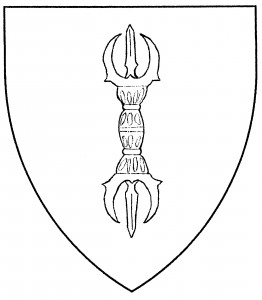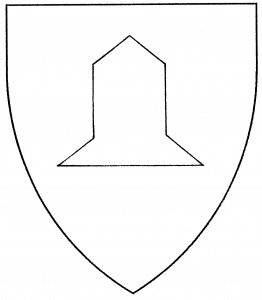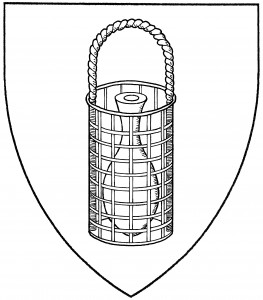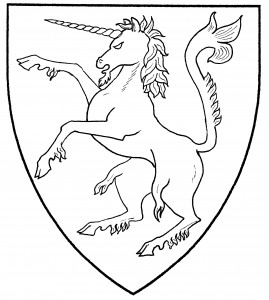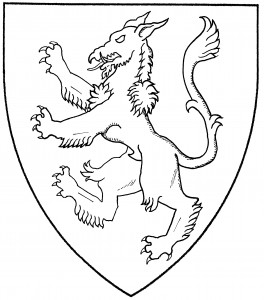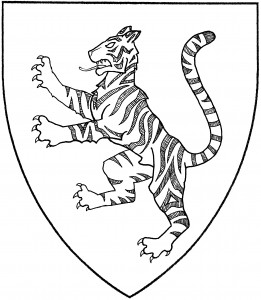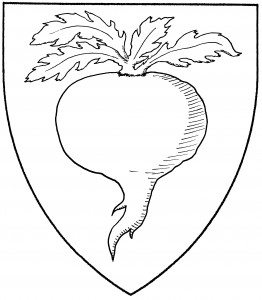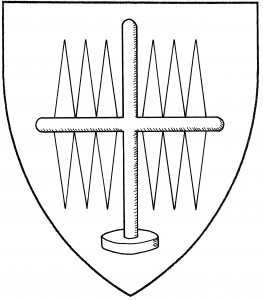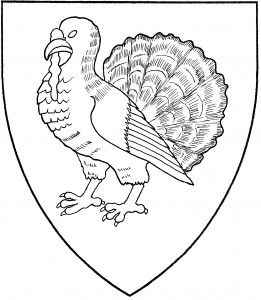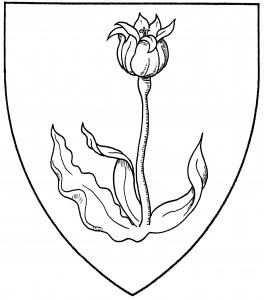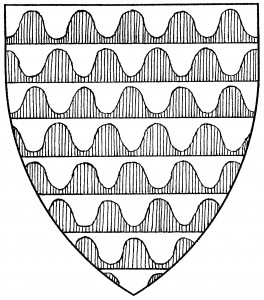
Vair, ancient (Period)
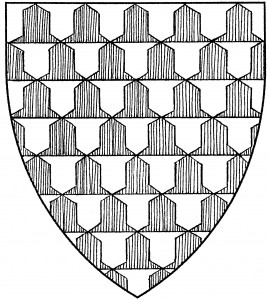
Vair, later period (Period)
Vair is one of the principal furs in heraldry, consisting of a series of panes, alternately white and blue, completely tiling the field. It was originally meant to represent squirrel-skins, sewn together with the back-fur and belly-fur alternating. There are several varieties of vair, all of which are considered mere artistic variations of one another.
The earliest depiction of vair, dating from the Matthew Paris shields c.1244, had rounded edges. Originally, the peaks didn’t touch the straight edges of the rows; by c.1400, the peaks might extend to the rows’ edges. These depictions are sometimes termed “vair ancient” in modern heraldry texts; the stylization is not blazoned in Society armory, being left to the artist. By the end of period, a more angular form of vair was used, tessellated with vair-bells; this form is the modern standard depiction. Period heraldic tracts also gave names to different patterns of arranging the panes: e.g., “counter-vair”, with the panes set base-to-base, and not alternating colors; and “vair en pointe”, with the panes staggered. There are other forms as well, some of which came to be used in post-period armory.
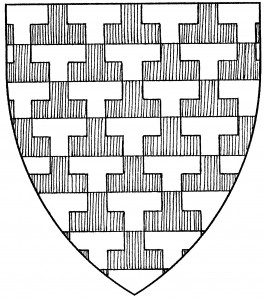
Potent (Period)
One style of depicting vair came to be called “potent”, because the panes resembled potents or crutches. Again, no difference is counted between vair and potent.
Vair furs may use other tinctures besides white and blue. Such cases must be explicitly blazoned: e.g., “Vairy Or and gules”, the canting arms of Ferrers, c.1244 [Asp2 222]. See also papellony, plumetty.
Kat’ryna Neblaga Volchkova bears: Vair, flaunches gules.
Gauvain Eisenbein bears: Vairy en point erminois and azure, a bordure gules.
Steven MacEanruig bears: Potent, on a pile sable a cross crosslet argent.
